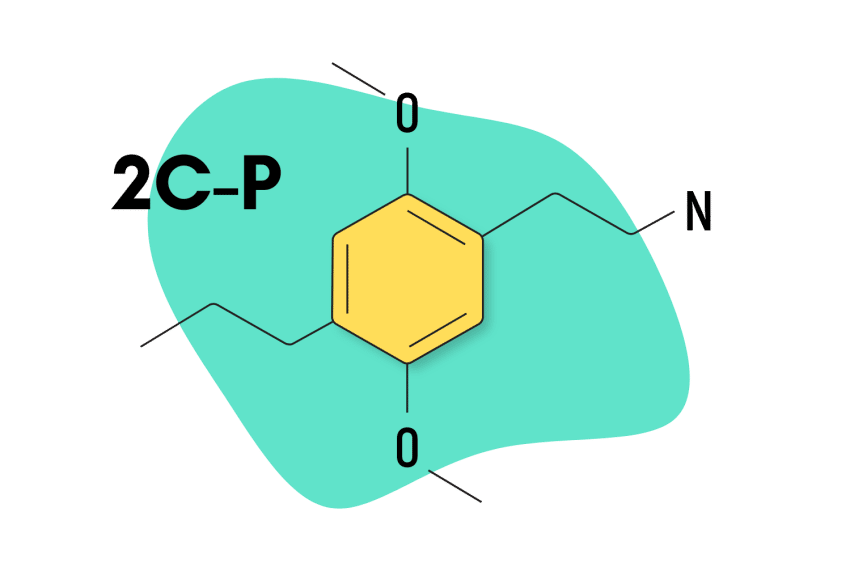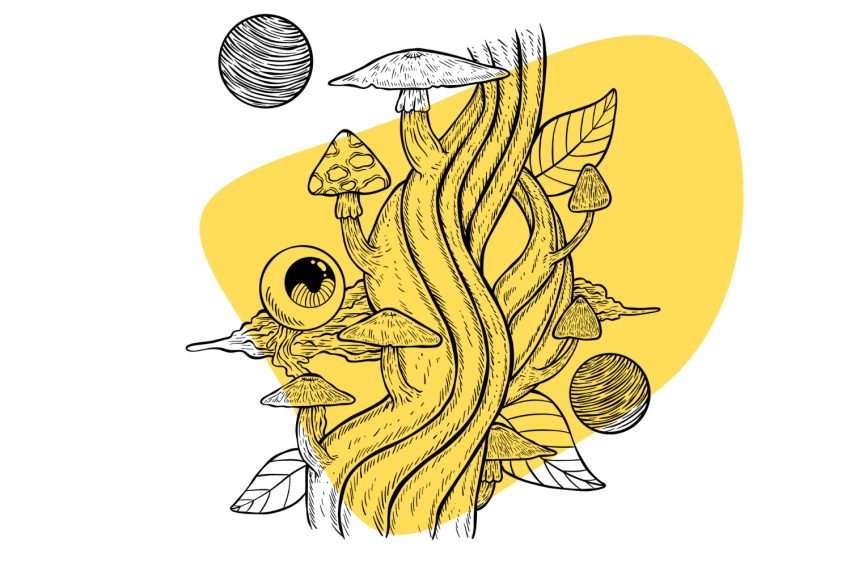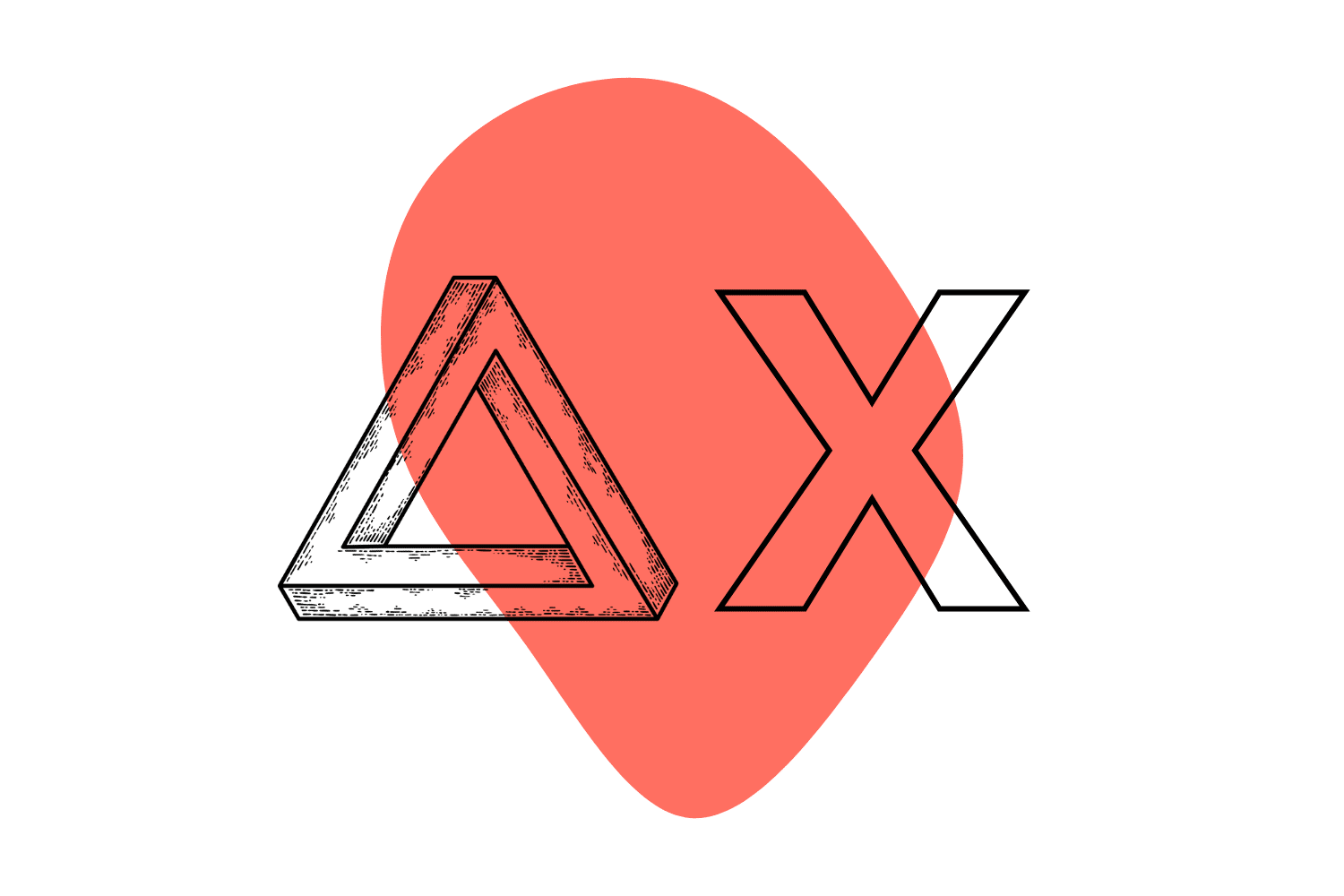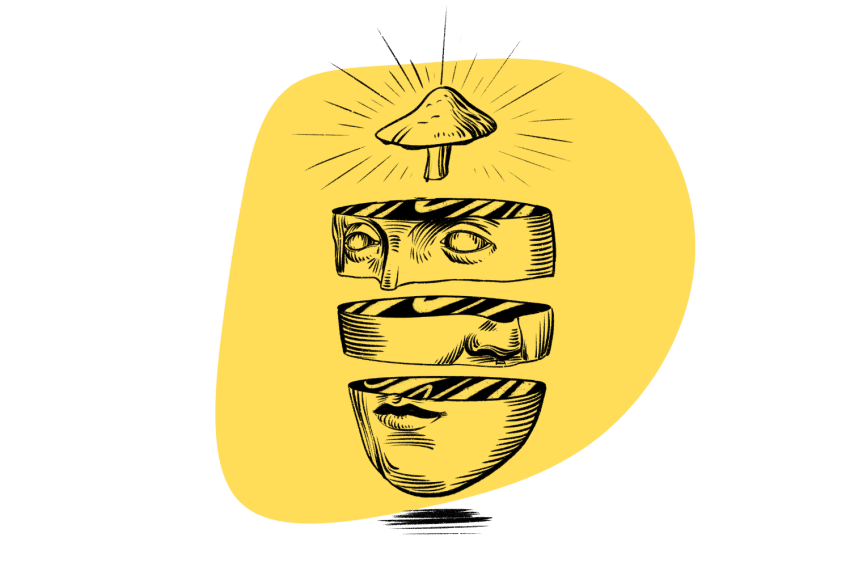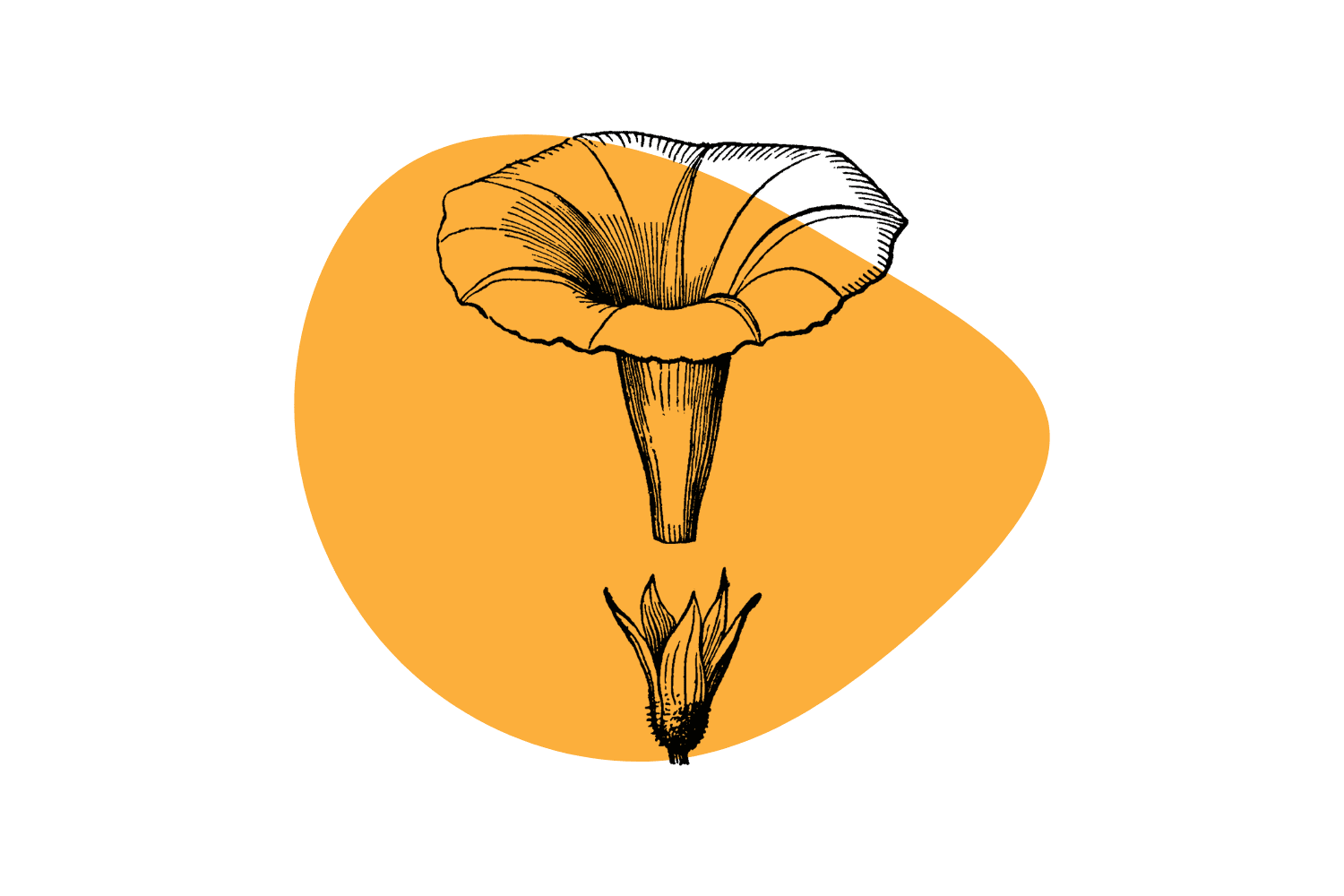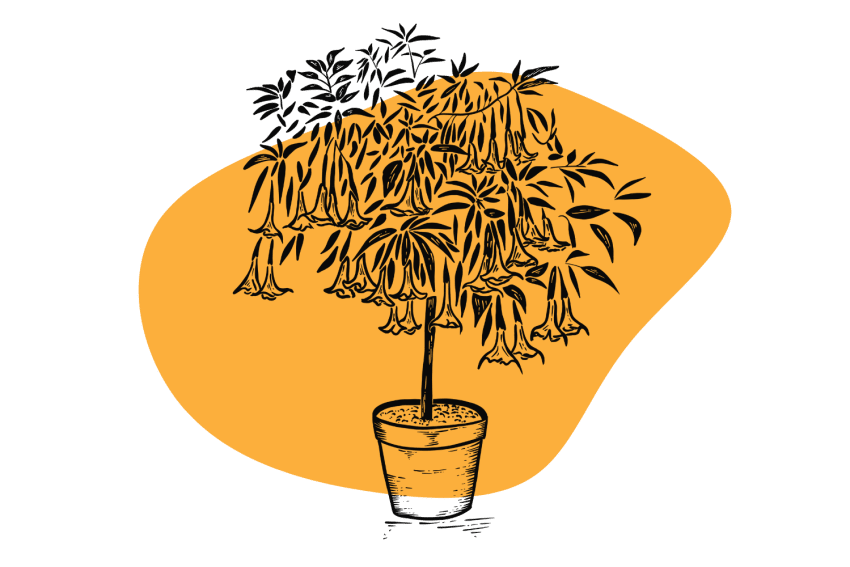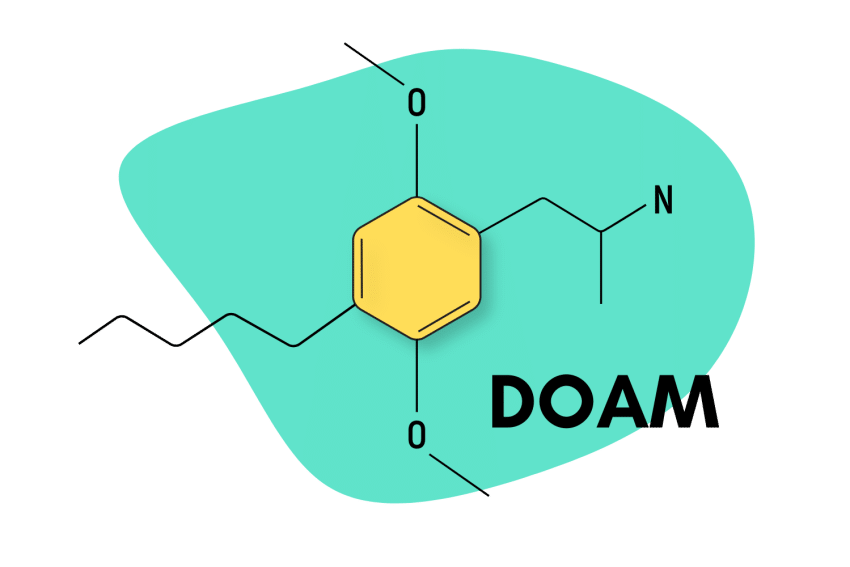List of Legal Psychoactive Substances Around The World
Should psychedelics be considered illegal in the first place?
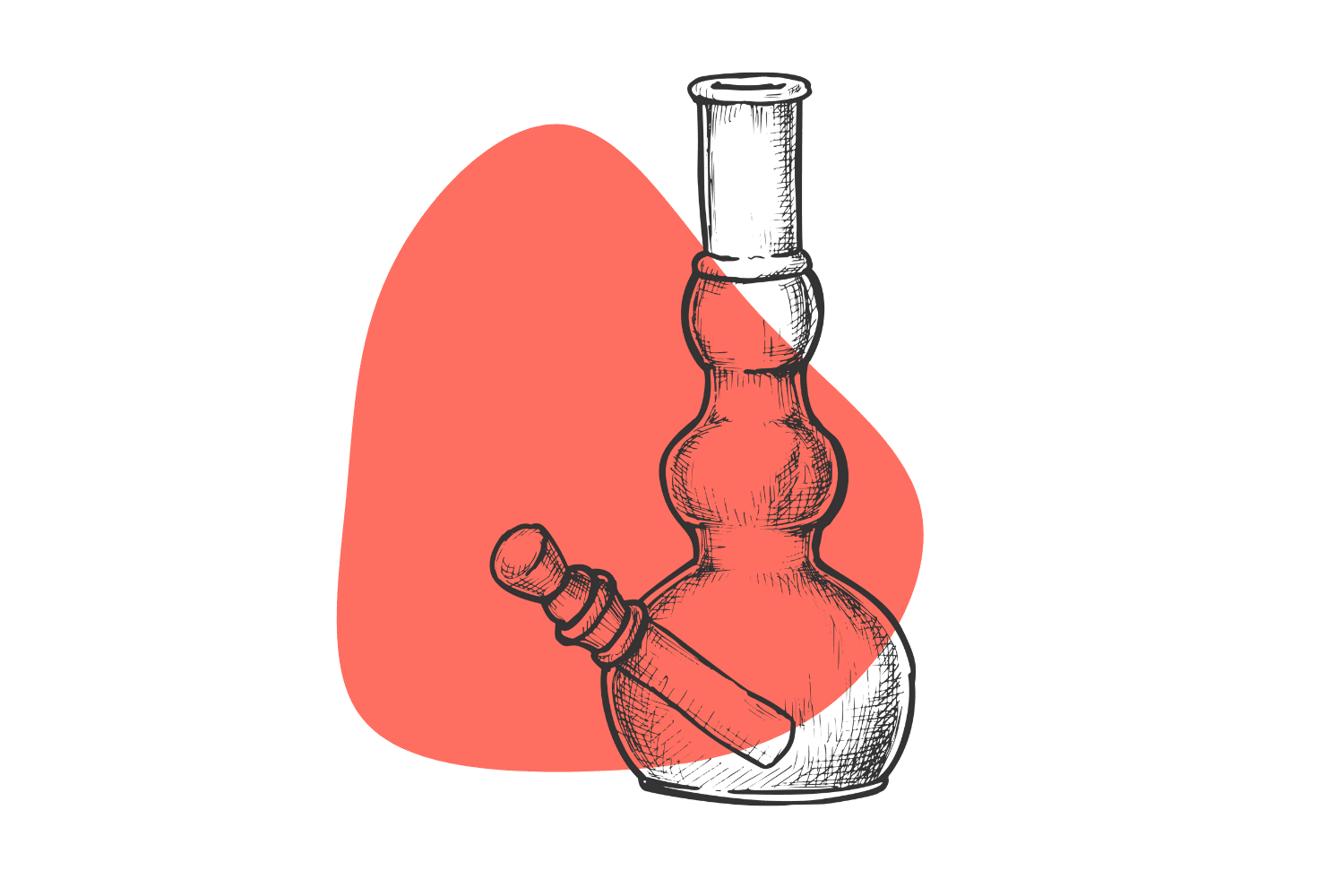
According to a recent study by SAMHSA, nearly half of all Americans have tried an illegal substance at some point in their lives.
The very existence of drug laws is an area hotly debated by addiction and policy experts alike. But the reality is that many psychoactive substances are strictly prohibited and are likely to stay that way for the foreseeable future.
We believe that by using psychoactive substances responsibly — that is, with the right intention, integration, and context — they can serve as a positive force for understanding your life, the human condition, and how to live a happier and more fulfilled existence.
Here are 18 legal psychoactive substances from around the world. You might be surprised at some of the substances on this list.
We’ll briefly cover what they are, how they’re used, and where they’re considered legal.
Current News & Headlines
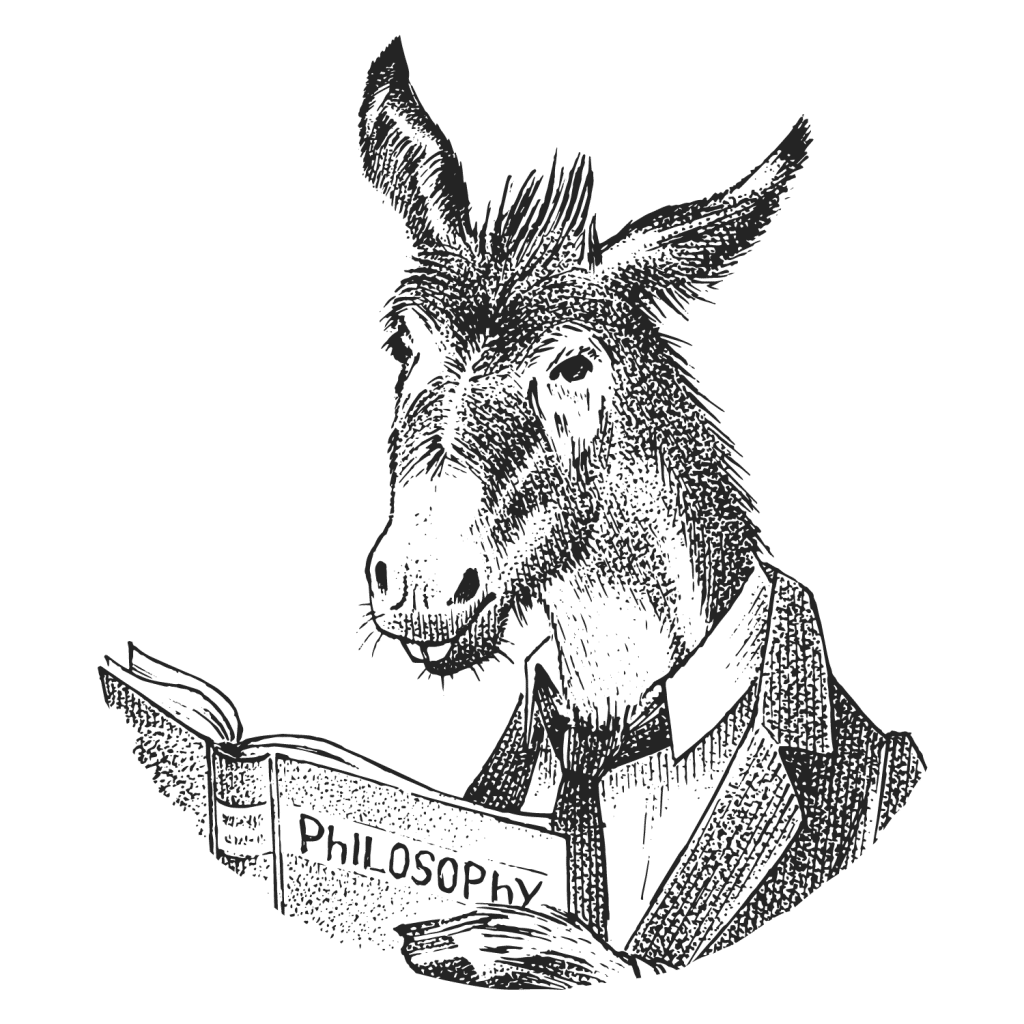
The Ethics of Using Psychoactive Substances
As humans, our understanding of the world is quite poor.
Many people have spent their entire lives trying to understand the human condition and what it means to be alive and “in control” of your own life. Philosophers have sought answers for why we think the way we do and what makes one person more moral than another.
Scientists have discovered breakthroughs in neurology that show us why some people feel more anxious or depressed than others. They’ve developed ways to catalog our personality types and psychiatric characteristics.
Even with all of these developments, there is nothing more complex than understanding yourself and why you do or think the way you do.
Certain plants, fungi, and synthetic chemicals exist in the world that can help us understand ourselves on a deeper level. They help us perform better at work, and experience more empathy and connection to the world around us.
This isn’t a new concept. Humans have been using psychoactive substances for millennia. The main use is for supporting mental and physical health, optimizing performance for a given task, and experiencing a greater spiritual connection.
There’s no such thing as a good substance or a bad substance. They’re just chemicals that exist in the world. It’s how we use them and our relationship with them that can be healthy or unhealthy.
The goal is to learn how to use these substances as tools to better our lives. Learn more about the responsible and safe use of psychoactive substances.
The Risks of Using Psychoactive Substances
Some substances can lead to addiction — which is defined as the compulsive desire to use a substance despite it having a negative impact on your life. This is a problem drug policy aims to fix by banning their sale and use.
Whether it actually fixes this or not is definitely up for debate, and there are plenty of examples where doing the exact opposite leads to even lower drug abuse rates.
In fact, many people are under the false impression that if a substance is legal, it must be safe. Drug laws rarely make a lot of sense. There are plenty of illegal drugs that offer clear health benefits without increasing the risk of addiction or abuse, and legal substances that are known to be highly addictive.
No matter what substance you’re using, it’s important to check in with yourself regularly and ask yourself why you’re using it and what impact it’s having on your life.
If the impact is negative, consider why this might be, and take a break from using it for a while.
List of Legal Psychoactive Substances
Without further ado, here’s the list of legal psychoactive substances. This list includes both natural and unnatural substances, and not all of them are legal everywhere.
Always double-check the laws where you live to make sure you’re not breaking any laws.
Drug laws change rapidly, so it’s always wise to get your information from the source and visit your local government’s website to check the updated list of regulated substances before you make an order for something online.
1. Areca Nut
The areca palm produces a seed that’s chewed for its stimulating effects. The seed, called a betel nut, is chewed to release an active ingredient called arecoline — which is similar in structure to nicotine from tobacco and shares many of the same effects.
This psychoactive seed is the third-most-popular psychoactive plant in the world. It’s used in a similar context to coffee or kratom for stimulating the central nervous system and enhancing focus and productivity.
Chewing areca nut makes the user feel euphoric, energized, and clear-headed.
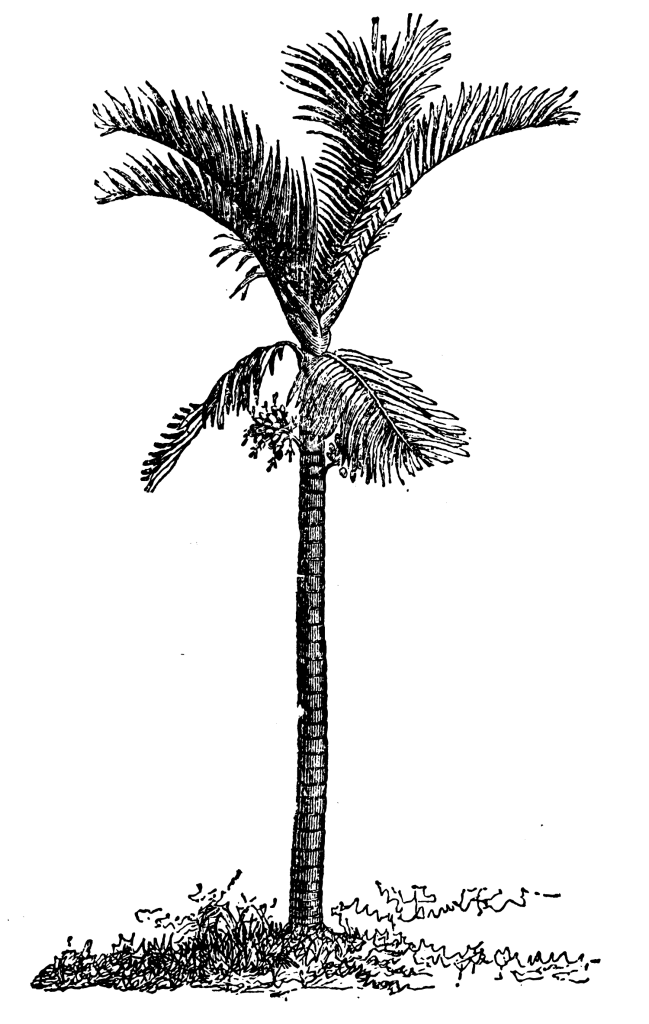
Where It’s Legal:
Areca nut is legal in Canada and the United States but illegal in the United Kingdom and Australia. The seed is legal in many Asian countries where it’s most popular.
Areca Nut Specs
| Effects | Stimulant |
| Safety Level | Moderate |
| Natural or Synthetic | Natural |
2. Cacao
Cacao is the raw form of chocolate. It comes from the cacao tree (Theobroma cacao) — which is native to Central and South America.
The pods from the tree contain bitter, stimulating seeds that are used to make cacao.
Cocoa and chocolate are then made by combining the bitter seeds with fats (also from the cacao pod), sweeteners, and dairy products.
Raw cacao is often used ceremonially along with a practice of intention. It’s a tool for promoting introspective and meditative states and inciting deeper flow states at work or other creative ventures.
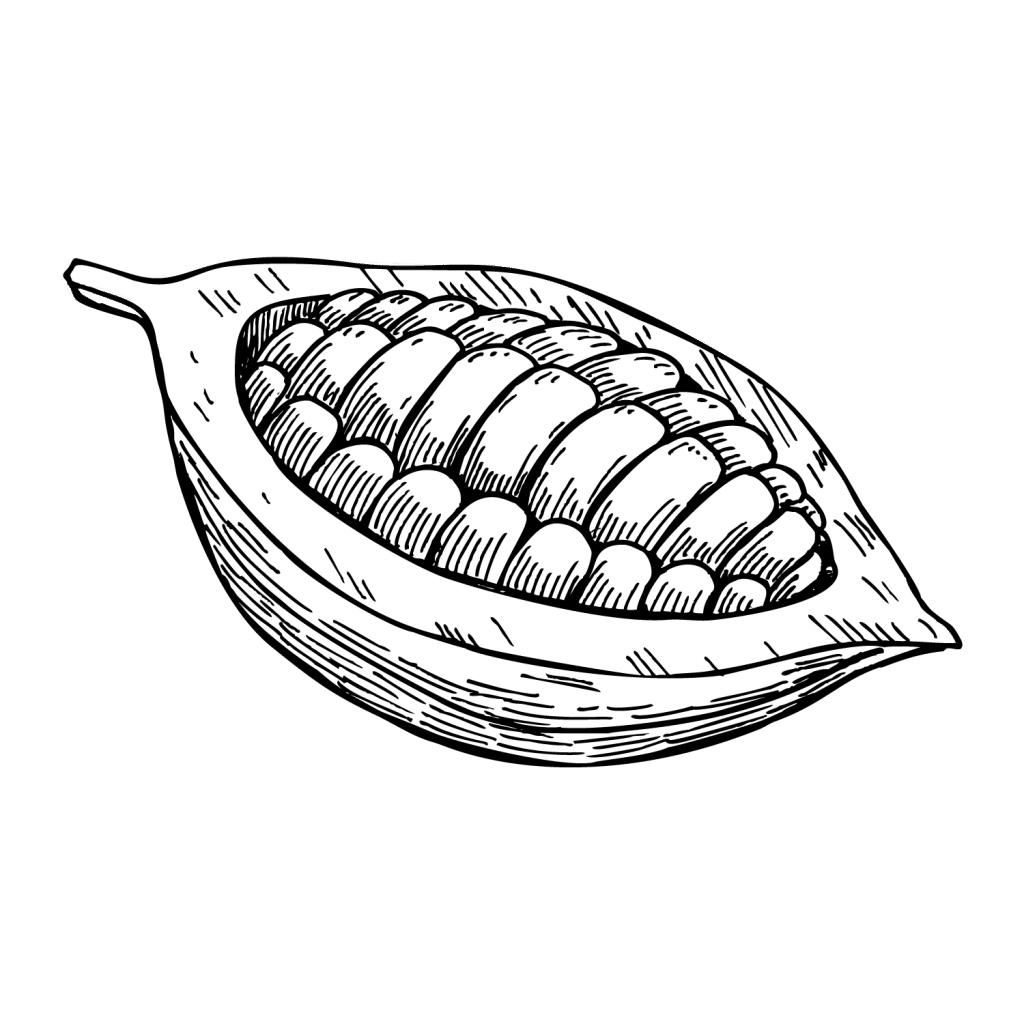
Where It’s Legal:
Cacao is legal worldwide.
Cacao Specs
| Effects | Stimulant |
| Safety Level | Safe |
| Natural or Synthetic | Natural |
3. Cannabis
Cannabis is one of the most popular psychoactive plants in the world. It contains a variety of active ingredients called cannabinoids. The two primary cannabinoids are THC (tetrahydrocannabinol) and CBD (cannabidiol). THC is psychoactive, triggering feelings of euphoria and altered perception.
CBD is non-psychoactive but offers a variety of unique health benefits through its ability to regulate key homeostatic mechanisms in the body.
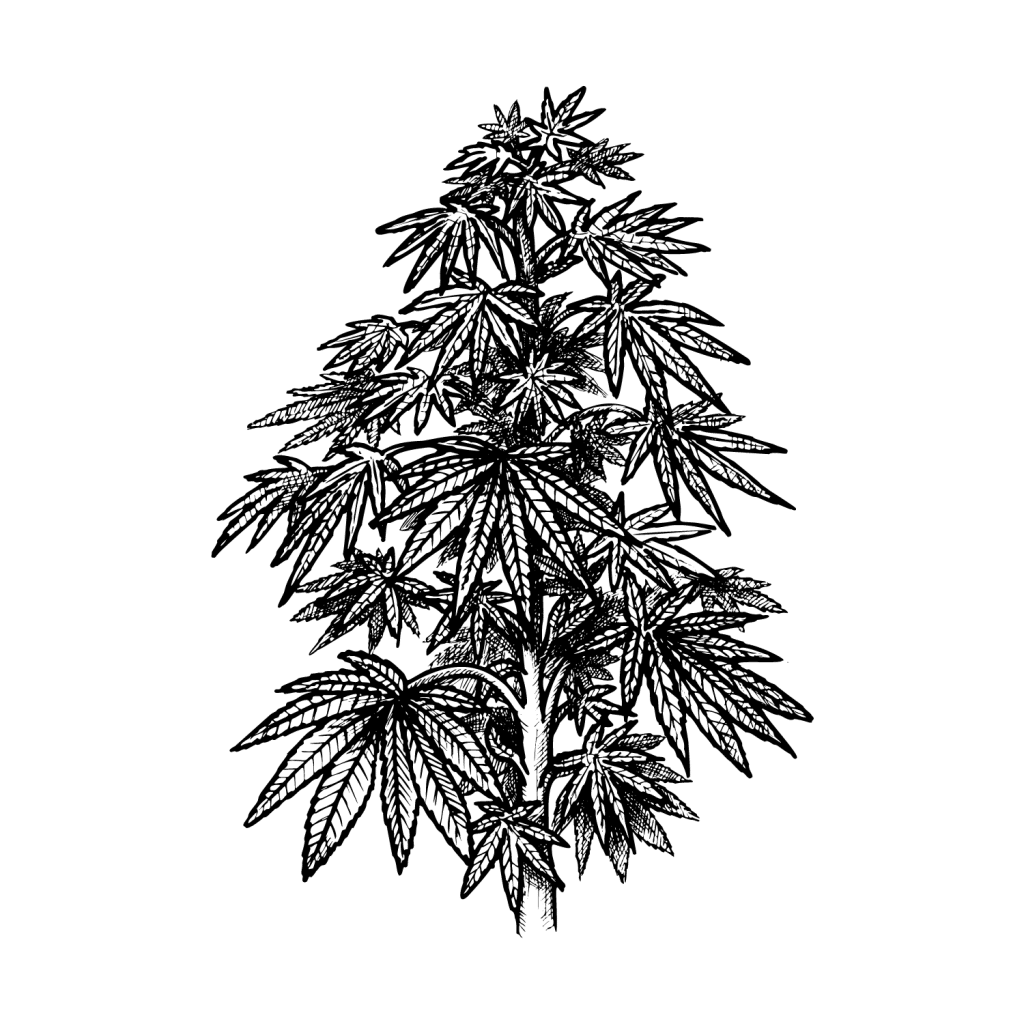
Where It’s Legal:
So far, only Canada and Uruguay have officially legalized cannabis use among the general public.
Several specific US states have also legalized the plant locally, but it remains illegal on a federal level. Cannabis is legal in Alaska, Arizona, California, Colorado, Illinois, Maine, Massachusetts, Michigan, Montana, Nevada, Oregon, Pennsylvania, Vermont, and Washington.
In some states where marijuana is illegal, another cannabinoid called delta 8 THC is sometimes legal as long as it’s made from hemp. This is also the case for similar cannabinoids, including delta 10 THC, THCP, THCV, and THC-O.
Cannabis is illegal in the United Kingdom and Australia unless granted a medical exemption.
CBD-specific products that contain only trace amounts of THC are legal in most parts of the world without needing a prescription or medical exemption.
Cannabis Specs
| Effects | Sedative, Euphoric, Mild Hallucinogen |
| Safety Level | Safe |
| Natural or Synthetic | Natural |
4. Coffee
Coffee is the most widely used psychoactive substance in the world. The active ingredient, caffeine, works by blocking the effects of adenosine — which is a compound that slows down electrical transmission in the brain and makes us feel sleepy. Adenosine levels build up gradually throughout the day — causing us to feel sluggish and tired in the evening.
Caffeine blocks adenosine to make us feel alert and awake. It also has adrenergic effects that directly stimulate the heart, lungs, and central nervous system.
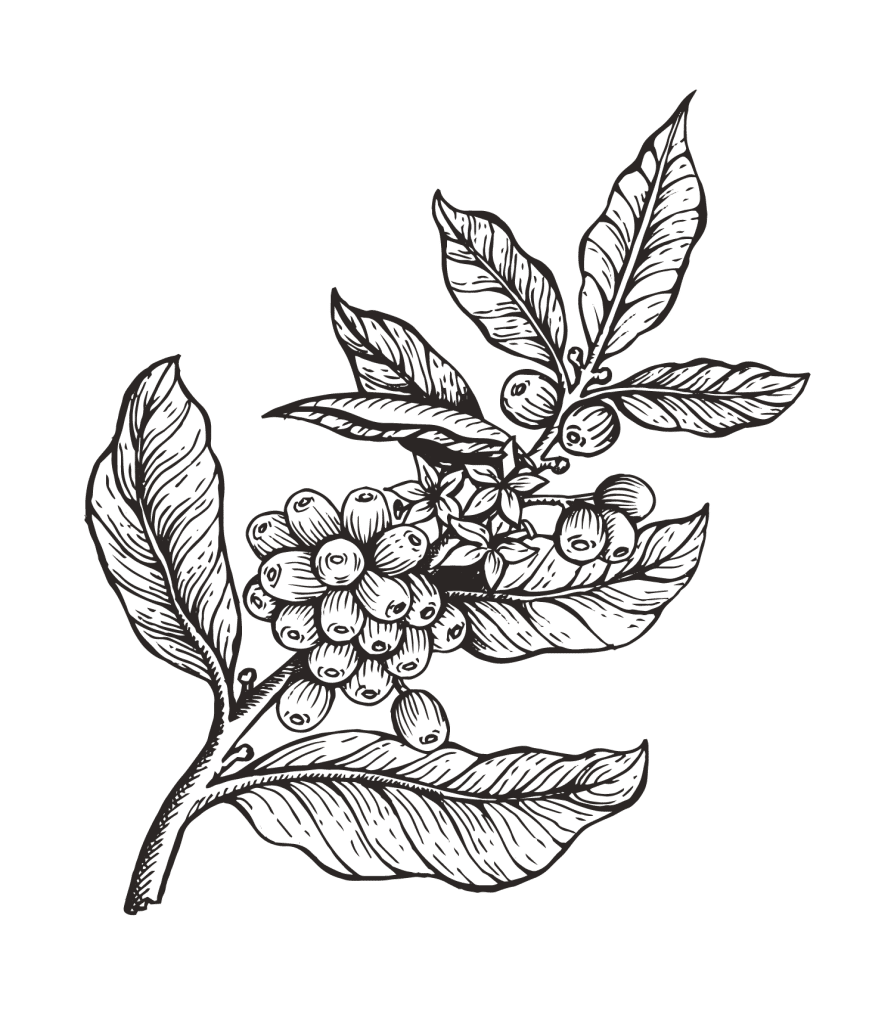
Where It’s Legal:
Coffee is legal all over the world.
Coffee Specs
| Effects | Stimulant |
| Safety Level | Safe |
| Natural or Synthetic | Natural |
5. Kanna
Kanna (Sceletium tortuosum) is a succulent species of plant from the African continent. It’s used in a similar way to betel (areca) nut to stimulate the mind and promote a state of euphoria and mental focus.
Kanna’s active ingredients are mesembrine, mesembrenone, mesembrenol, and tortuosamine, which work primarily through the CCK1 receptors. These receptors help control the release of endorphins and dopamine, both of which are involved with the brain’s pleasure response. This is likely the plant’s mechanism of action to induce euphoria and mental alertness.
Kanna also upregulates GABA activity in the brain — which is a common mechanism of action herbs use to relieve anxiety and promote a state of relaxation and mental clarity.
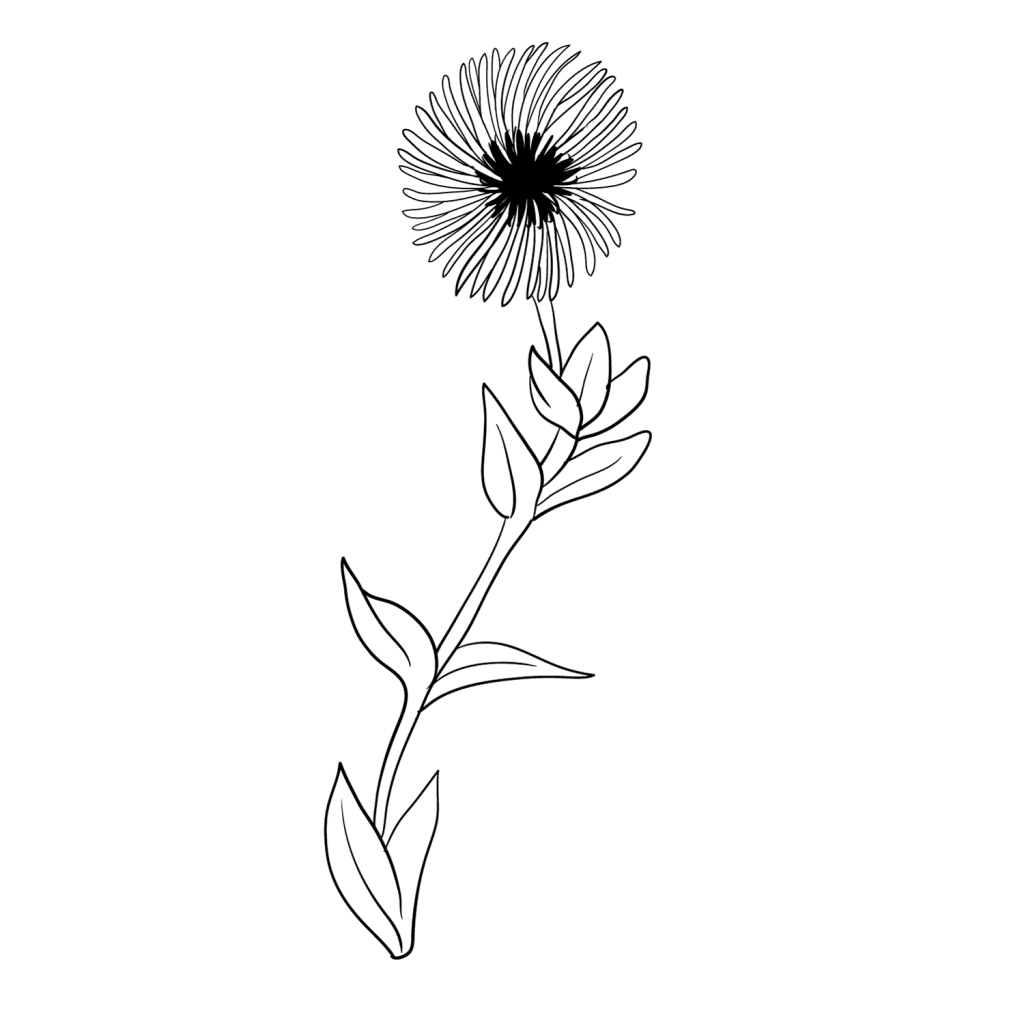
Where It’s Legal:
Kanna is legal throughout Europe, Canada, and Australia.
This herb is also legal in the US, with one exception — Louisiana — which banned Kanna and 40 other plants of plants back in 2005.
Kanna Specs
| Effects | Stimulant & Euphoric |
| Safety Level | Safe |
| Natural or Synthetic | Natural |
6. Kava
Kava (Piper methysticum) is a tropical plant species found on various islands of the Pacific ocean — such as Fiji, Vanuatu, Samoa, Tonga, and the Solomon Islands.
The roots of the kava plant are prepared ceremonially to induce a mild state of inebriation. The effects of kava are relaxing and euphoric. It’s used in place of alcohol while socializing with friends and family members and as an alternative treatment for depression, anxiety, and insomnia.
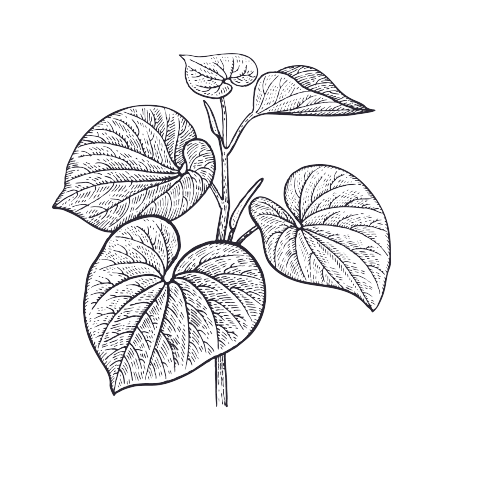
Where It’s Legal
Kava is legal in most parts of the world. It was banned in the early 2000s out of fears that the plant was toxic to the liver. However, this has since been disproved, and most of the countries to have banned the herb have since overturned it.
The only places kava is illegal to possess today are the United Kingdom, France, The Netherlands, and Switzerland.
In the United States, you can even attend kava bars that specialize in serving kava preparations to their patrons.
Kava Specs
| Effects | Sedative & Euphoric |
| Safety Level | Safe |
| Natural or Synthetic | Natural |
7. Kratom
Kratom (Mitragyna speciosa) is a member of the coffee family of plants (Rubiaceae). Like coffee, kratom is used as a stimulant. In higher doses, kratom has more of a narcotic action — activating the opiate pain receptors to kill pain and induce a state of relaxation and euphoria. Users often take kratom in place of addictive pharmaceutical pain medications to manage chronic pain, anxiety, or insomnia.
Many people take kratom for its mind-altering effects as an alternative to alcohol.
Where It’s Legal:
Kratom is legal in Canada and the United States but banned in both the United Kingdom and Australia.
Kratom Specs
| Effects | Stimulant, Sedative, & Euphoric |
| Safety Level | Moderately Safe |
| Natural or Synthetic | Natural |
8. Wild Lettuce
There’s a unique type of lettuce, called Lactuca virosa, that has some mild psychoactive effects. The lettuce we know and love as the basis for our salad is a related species called Lactuca sativa.
Wild lettuce produces a thick white exudate called lactucarium that resembles opium. The active ingredients, lactucin, and lactucopicrin, promote mild euphoria and opiate-like effects. In higher doses, wild lettuce can cause hallucinations, as well as dizziness and anxiety.
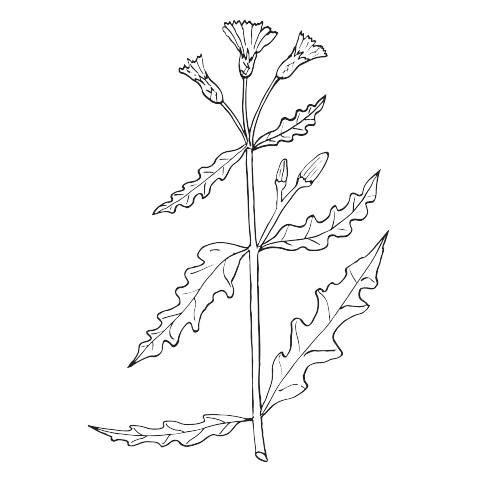
Where It’s Legal:
Wild lettuce has not been banned in any country and grows throughout the United Kingdom, the United States, Australia, and Canada.
Wild Lettuce Specs
| Effects | Sedative & Euphoric |
| Safety Level | Safe |
| Natural or Synthetic | Natural |
9. Tobacco
Tobacco is the quintessential psychoactive plant for humanity — challenged only by the likes of coffee in terms of popularity.
The active ingredient in tobacco is nicotine — which works by activating the adrenal system to stimulate the body. It induces a short-lasting feeling of euphoria, kills appetite, and promotes a higher state of focus and mental clarity.
There are several species of tobacco, but the one with the highest concentration of nicotine is Nicotiana rustica — a Brazilian species of tobacco used ceremonially in the Amazon. It contains up to 18% nicotine by weight.
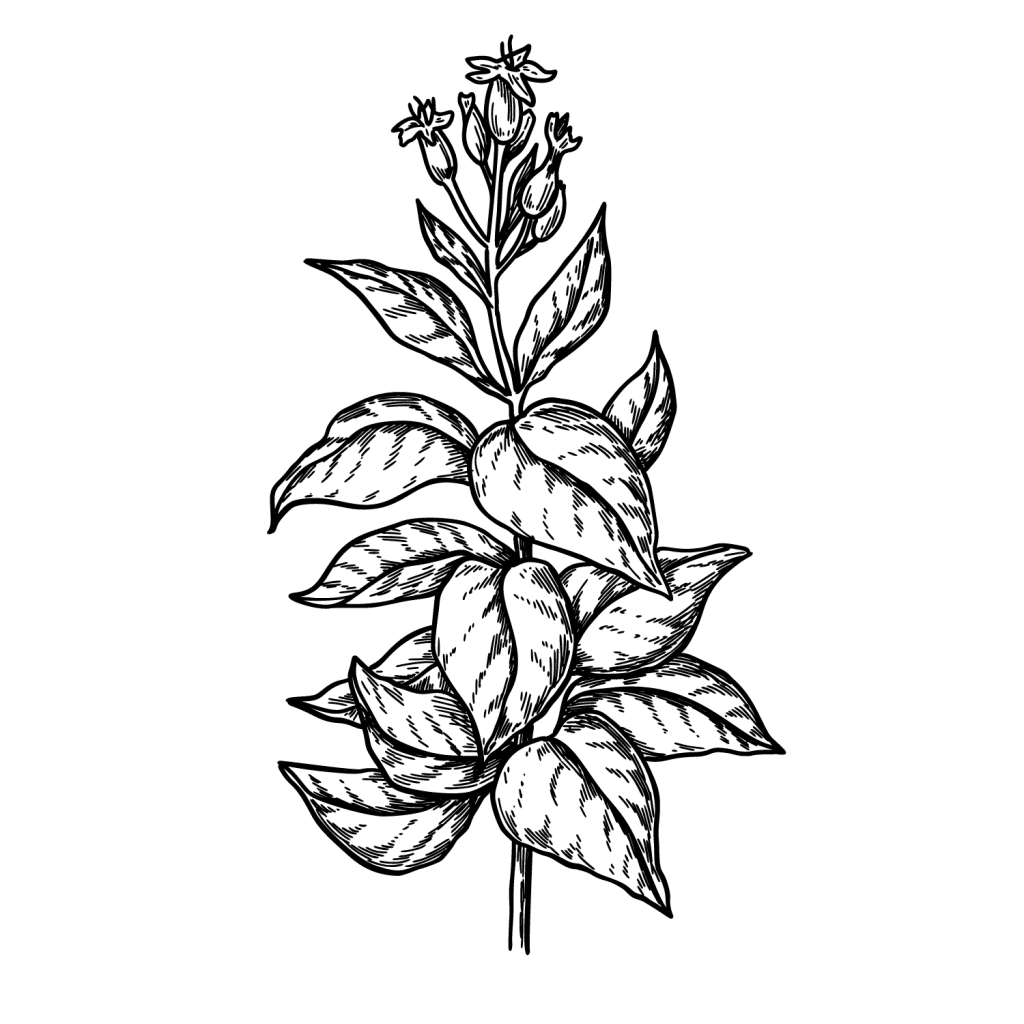
Where It’s Legal:
Tobacco and nicotine are legal all over the world. In places like Canada, The United States, Australia, and The United Kingdom, tobacco products are usually highly taxed as a way to discourage their consumption. Regular use of tobacco has been linked with a variety of health conditions, including heart disease, stroke, and cancer.
In moderation, tobacco is thought to be a useful nootropic and healing plant. It’s not the plant itself that’s dangerous; it’s the way modern society doesn’t use it in moderation — often smoking upwards of a pack of cigarettes per day.
Tobacco Specs
| Effects | Stimulant & Euphoric |
| Safety Level | Moderately Safe |
| Natural or Synthetic | Natural |
List of Legal Psychedelics
There are even a few psychedelics that have somehow managed to avoid regulation or control.
Not all the substances on this list will be legal where you live, so make sure to check with your local laws before deeming them legal or illegal where you live. This list is meant to serve merely as a guide.
1. Salvia
Salvia (Salvia divinorum) is one of the strongest psychoactive species of plants in the world. It works through a completely separate mechanism from most psychedelics — such as LSD, magic mushrooms, and ayahuasca. The active ingredient, salvinorin A, targets the kappa-opioid receptors to produce intense out-of-body hallucinations.
The effects of salvia are very short-lived — lasting no more than 45 minutes. More commonly, the experience is over within about 20 minutes.
Despite how psychoactive this herb is, it’s legal in most parts of the world. This is somewhat unsurprising as salvia has never been associated with abuse or addiction. Most people that use salvia never try it again. The experience can be so intense, so profound, and so terrifying, most people would never conceive of willingly using the herb again.
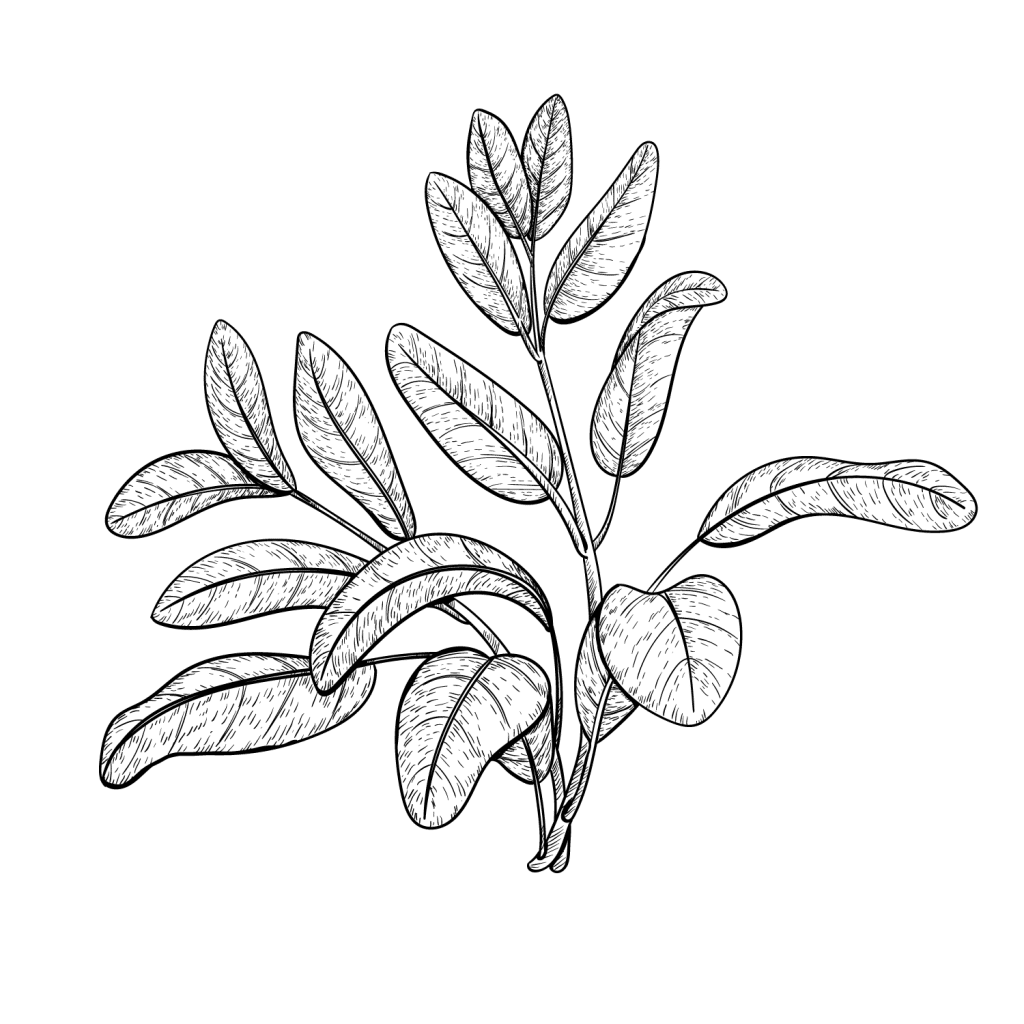
Where It’s Legal:
Salvia is legal in The United States, Canada, Denmark, The Netherlands, New Zealand, France, and Spain. You can usually find this herb at head shops sold as “incense” or order it from various online retailers.
Salvia Specs
| Effects | Psychedelic |
| Safety Level | Safe But Scary |
| Natural or Synthetic | Natural |
2. Morning Glory
Morning glory (Ipomoea spp.) is a small, unassuming species of vine. It’s considered a weed in most parts of North America and Europe — often popping up in gardens and roadsides.
The seeds of the morning glory plant contain a compound similar to LSD — called LSA (D-lysergic acid amide). The seeds can be chewed directly or processed to extract the LSA. Swallowing the seeds often leads to digestive upset, so most people will simply chew the seeds into a pulp for around 20 or 30 minutes before spitting them out.
The effects of LSA and morning glory are very similar to LSD but much milder.
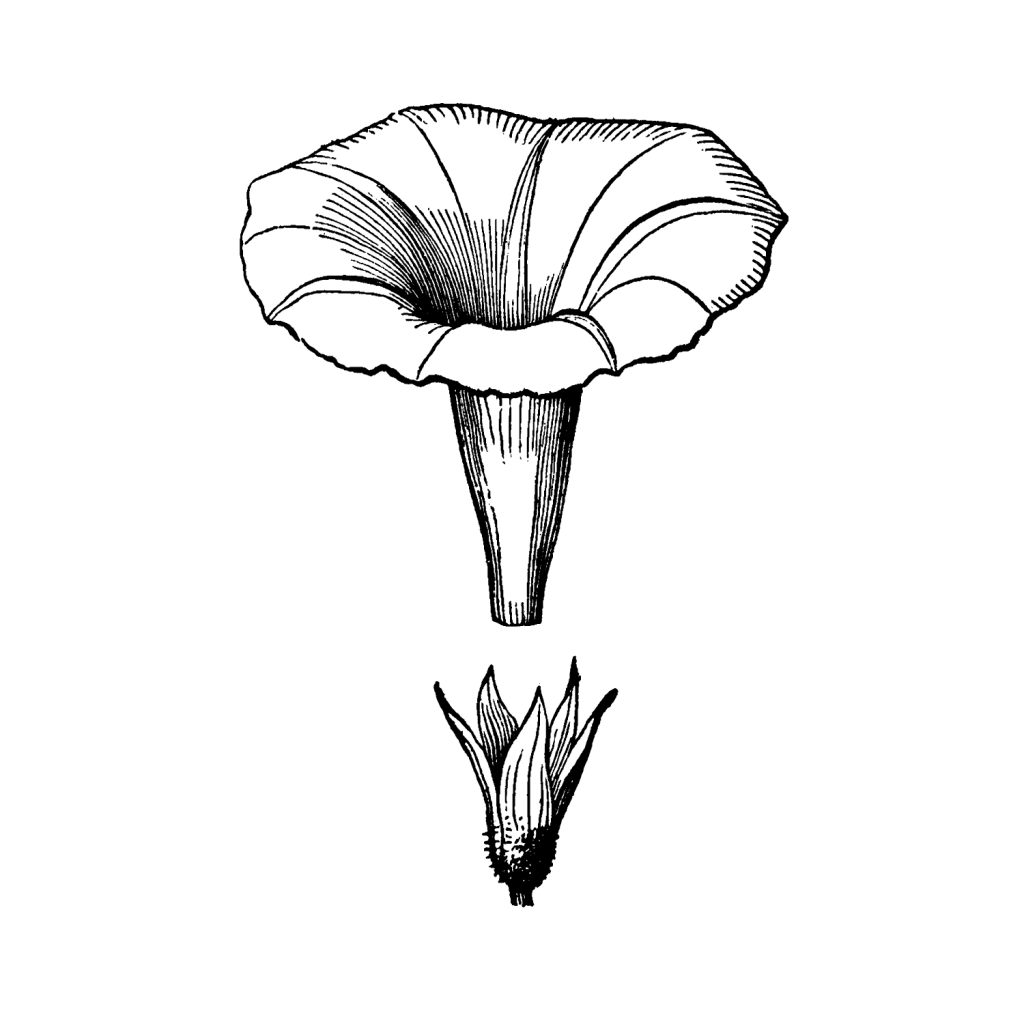
Where It’s Legal:
Morning glory is completely legal to grow, harvest, and possess in the United States, Canada, The United Kingdom, and Australia. However, in all of these countries, it becomes illegal only when you extract the active LSA.
Morning Glory Specs
| Effects | Psychedelic |
| Safety Level | Safe |
| Natural or Synthetic | Natural |
3. Peyote & San Pedro
Peyote and San Pedro are species of mescaline-containing cacti from the Southern United States, Mexico, and Central and South America. They’re used as a sacrament and source of spiritual healing by many of the indigenous cultures living within the distribution range of these cacti.
Eating the cactus produces intense visual and auditory hallucinations and an altered state of consciousness. The active ingredient, mescaline, is considered by many psychedelic experts to be one of the most underrated psychoactive substances on earth.
Mescaline won’t blast you off into outer space or another dimension, but it forces you to recognize and live in the present moment. It’s considered to be a very grounding and insightful psychedelic, without causing a strong hallucination or altered perception of reality.
People who use peyote and San Pedro remain completely alert and present, but with an altered perception of time and sensory perception.
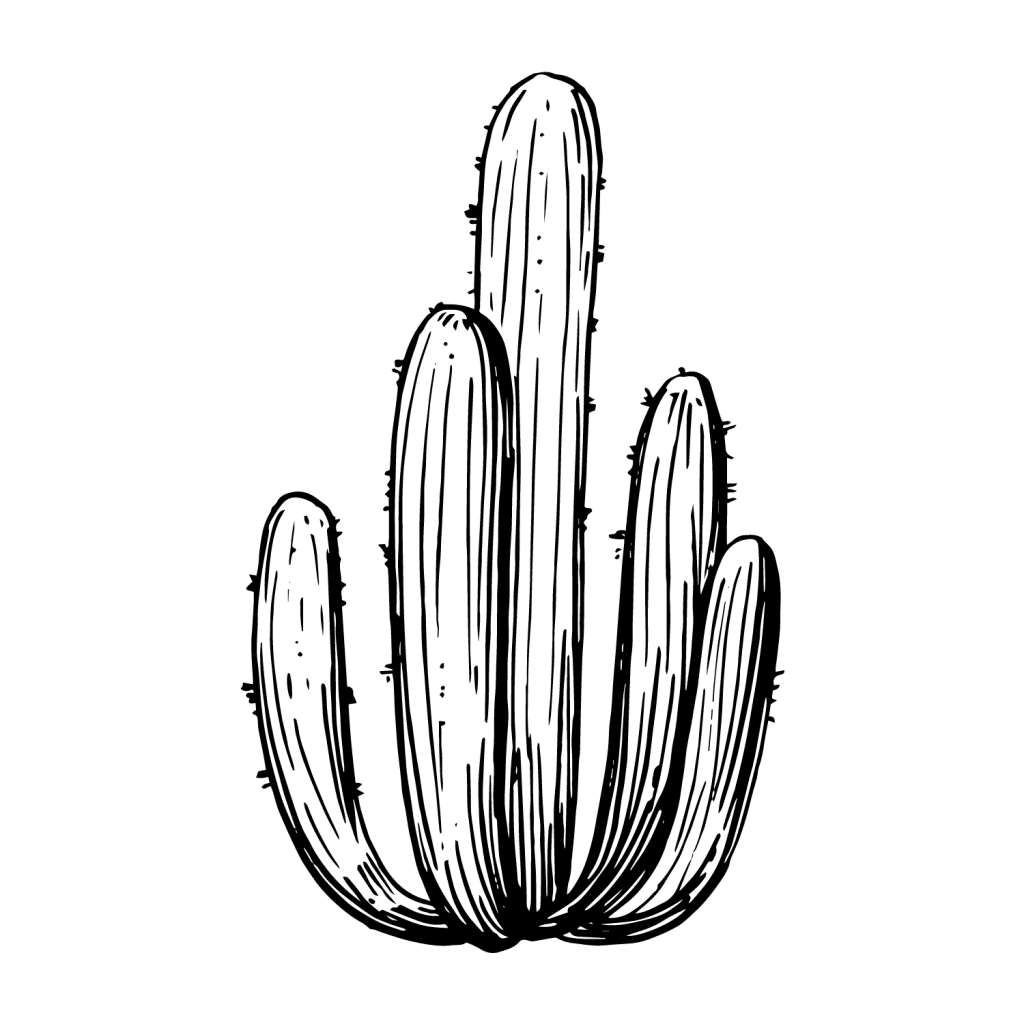
Where It’s Legal:
Peyote and San Pedro cactus grow naturally in the United States. However, it’s only legal to consume by Native Americans under the American Indian Religious Freedom Act. Outside of this sacramental use, peyote and any other source of mescaline are banned.
In Canada, mescaline is considered a schedule III restricted substance. The raw cacti are completely legal to own in both dried and live plant form. It only becomes illegal when the mescaline content is extracted from the raw cactus.
Peyote and San Pedro are both legal in the UK, Ukraine, and Thailand.
Several other countries permit the sale of live peyote or San Pedro cactus as a houseplant — including Germany, New Zealand, and France.
Peyote & San Pedro Specs
| Effects | Psychedelic |
| Safety Level | Safe |
| Natural or Synthetic | Natural |
4. Sassafras
Sassafras is a species of tree native to North America. It was one of the original ingredients used to make root beer.
One of the active ingredients in the plant, called safrole, is used to make MDA (methylenedioxyamphetamine) — which is a close relative of the potent psychoactive substance MDMA.
MDA shares many similar effects to MDMA but has a stronger hallucinogenic component. Conversely, MDMA is a much stronger empathogen.
Some studies suggest safrole can cause cancer — which is what led to this plant being banned as an ingredient for making root beer back in the 1970s.
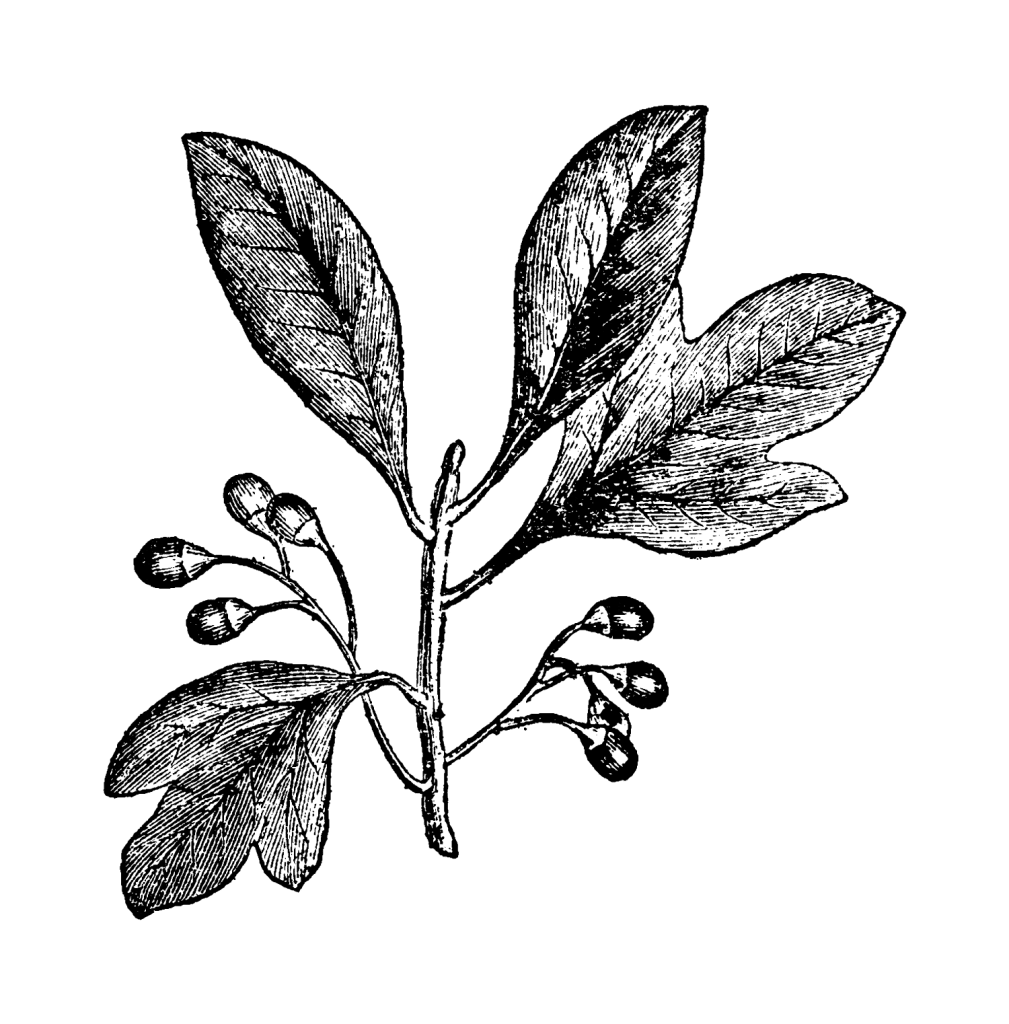
Where It’s Legal:
Sassafras itself is perfectly legal around the world. It’s only when the active ingredient, safrole, is extracted that it becomes illegal. This is the case in most countries, including Canada, The United States, Australia, New Zealand, and most of Europe.
Sassafras Specs
| Effects | Psychedelic |
| Safety Level | Potentially Dangerous |
| Natural or Synthetic | Natural |
5. Nutmeg
Not many people know this, but nutmeg contains a powerful hallucinogenic compound called myristicin. The effects of myristicin are most similar to mescaline.
Nutmeg can be smoked or eaten to induce intense visions and hallucinations. The downside is that nutmeg can also make you very sick — causing severe gastrointestinal distress, dizziness, and strong intoxication. Experts strongly advise against taking psychoactive doses of nutmeg for any reason.
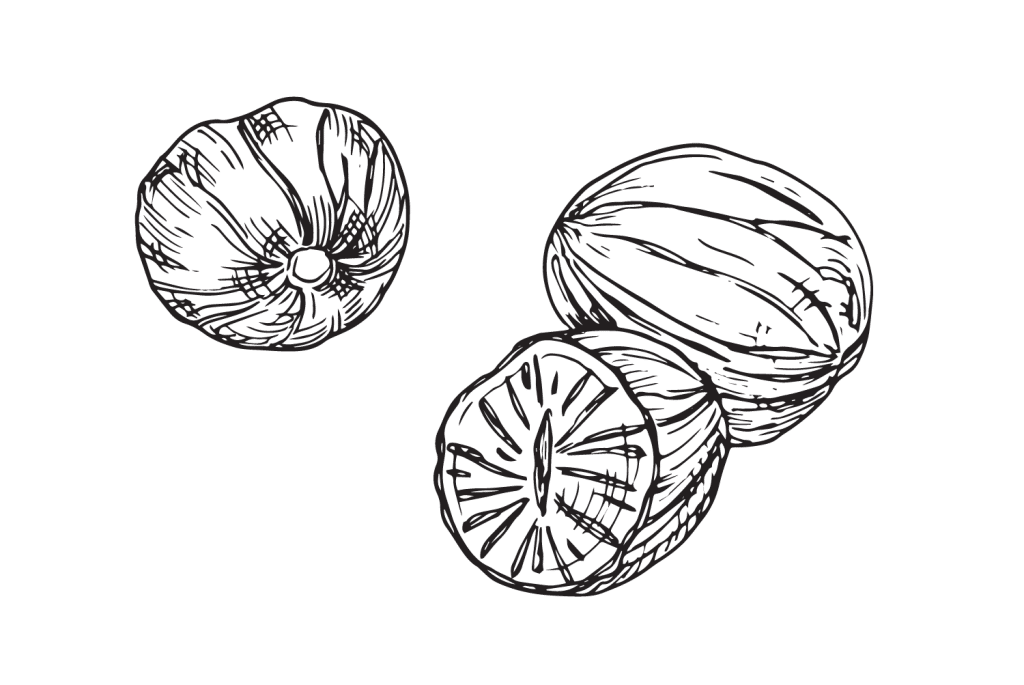
Where It’s Legal:
Nutmeg has not been banned in any country. It’s completely legal all over the world, where it’s highly valued as a spice — not for its hallucinogenic properties.
Nutmeg Specs
| Effects | Psychedelic |
| Safety Level | Dangerous |
| Natural or Synthetic | Natural |
6. Coleus
Coleus (Plectranthus scutellarioides) is a member of the mint family with characteristic brightly colored leaves. Some reports suggest this plant has psychoactive qualities when consumed in higher doses.
This isn’t a popular hallucinogenic, and there’s virtually no official research on the plant. Most of the knowledge of using this herb comes from the Mazatec people of Southern Mexico. They’re reported to have used this herb as an alternative for salvia.
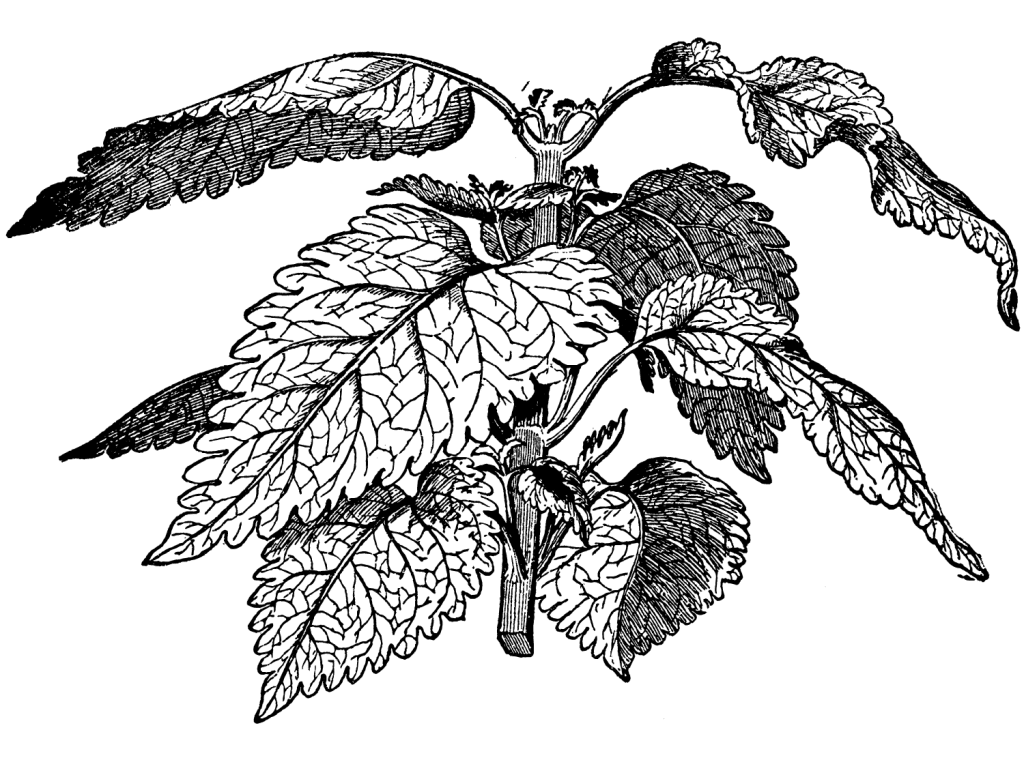
Where It’s Legal
Coleus is an obscure plant. Even within the psychedelic scene, most people are unaware of this common garden plant’s psychedelic properties. This plant has not been banned or regulated in any country to date.
Coleus Specs
| Effects | Psychedelic |
| Safety Level | Safe |
| Natural or Synthetic | Natural |
7. Magic Mushrooms
Magic mushrooms (Psilocybe spp.) are considered to be the quintessential psychedelic along with LSD (lysergic acid diethylamide). These psychoactive fungi are still considered illegal in most parts of the world, but the laws are rapidly changing, and many countries are becoming more relaxed on the use of magic mushrooms.
Over the past three years, there have been dozens of clinical studies proving that magic mushrooms are both safe to consume and offer legitimate medical value.
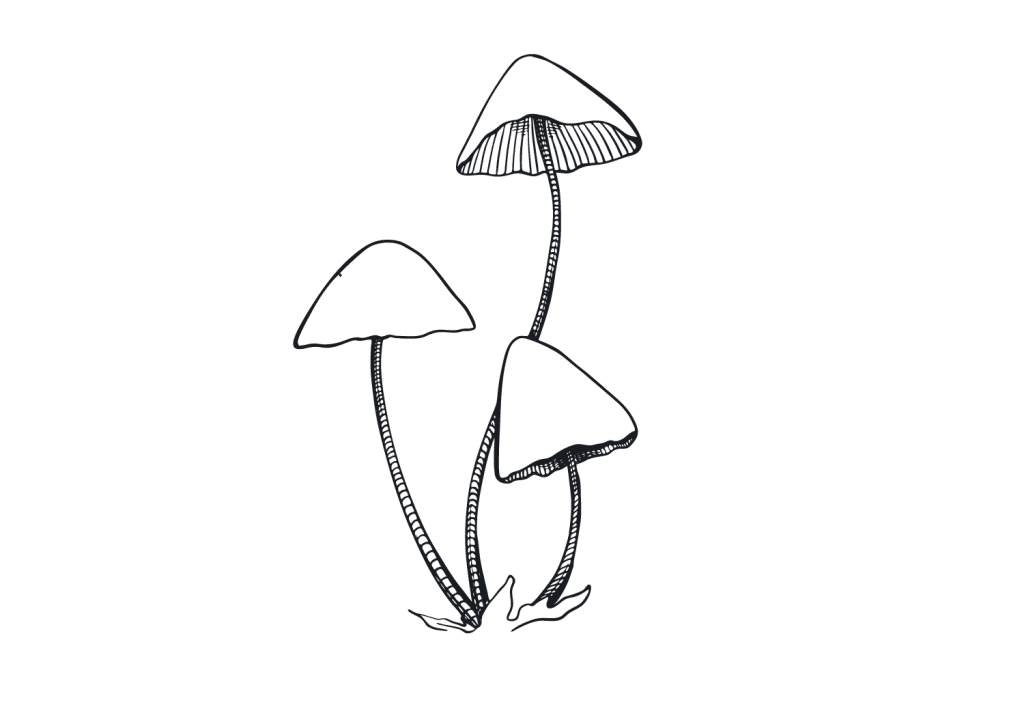
Where It’s Legal:
Most countries still ban magic mushrooms, including the United States and Canada. However, several municipalities across North America have either legalized or decriminalized the use of magic mushrooms despite federal regulations.
For example, Vancouver, Canada, recently passed a bill that decriminalized all drugs — including magic mushrooms. Even before this, the Vancouver police department said they would not be actively targeting possession charges for personal amounts of magic mushrooms or LSD.
In the United States, municipalities including Washington DC, Ann Arbor, Michigan, Denver, Colorado, Oakland and Santa Cruz, California, and the state of Oregon have all decriminalized magic mushrooms.
Decriminalization isn’t the same as legalization, however. You won’t be able to buy these mushrooms legally, but it does mean you won’t receive a criminal charge if caught in possession of them.
Outside of North America, magic mushrooms have been decriminalized in Austria and the Bahamas — and legalized in Brazil, The British Virgin Islands, Jamaica, Nepal, The Netherlands, and Samoa.
In most parts of the world, magic mushroom spores are legal. People use these spores to then grow magic mushrooms at home — which is only legal where mushrooms are decriminalized.
The most common species of magic mushroom is Psilocybe cubensis but there are many other species found in the wild on all continents except Antarctica.
Magic Mushroom Specs
| Effects | Psychedelic |
| Safety Level | Safe |
| Natural or Synthetic | Natural |
8. Blue Lotus Flower
The blue lotus flower (Nymphaea caerulea) is an ancient Egyptian dream herb used for inducing trance-like states and divination. It’s also a powerful aphrodisiac, soporific, and emetic (depending on the dose).
This herb can be smoked, vaped, or made into a tea or tincture.
Blue lotus isn’t psychedelic like the other herbs on this list. It’s considered oneirogenic — which means it induces more vivid dreams. It’s often used as a tool for enhancing or inducing lucid dream states.
In alcohol infusions, the blue lotus is a popular aphrodisiac.
Where It’s Legal
Blue lotus flower is legal all over the world, with the exception of Russia and Poland.
You can find this stuff at local herb shops, headshops, online, and some health food stores.
Blue Lotus Flower Specs
| Effects | Oneirogenic & Narcotic |
| Safety Level | Safe |
| Natural or Synthetic | Natural |
Legal, But Dangerous Psychoactive Substances
Just because a substance is legal doesn’t mean it’s safe. Here are the most common legal psychoactive substances you should avoid altogether.
1. Datura
Datura (AKA jimsonweed) is a powerful deliriant psychedelic plant found growing throughout North America. It’s an invasive weed in some parts of the continent that can be found growing in your garden or on the sides of the road.
Datura is powerful but almost never produces a positive experience for people. The visions the plant produces are terrifying and can even be painful. It will make you feel like you’re going insane and that your heart is going to beat right out of your chest.
Historically the plant has been closely associated with demons, the devil, or other evil spirits.
As an anticholinergic, datura can also be lethal. It’s not uncommon for people to die from using this plant.
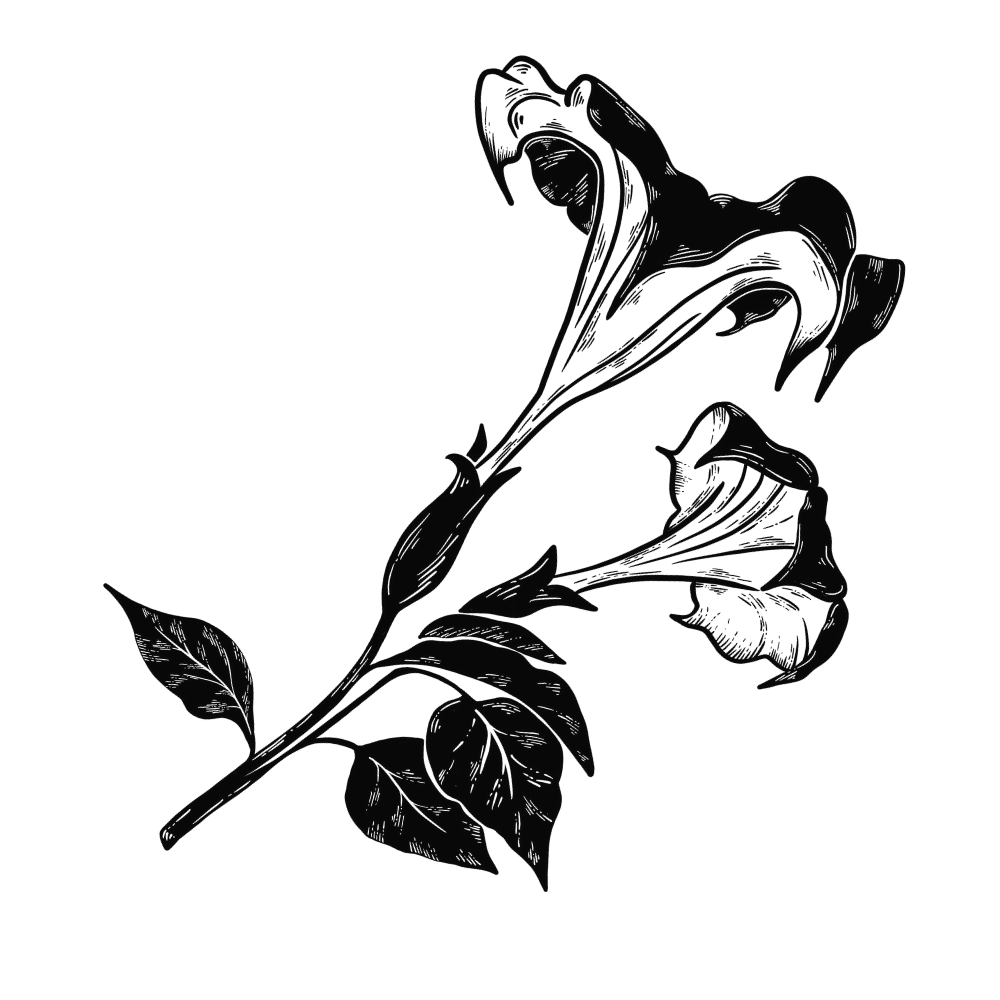
Where It’s Legal
Datura is legal in just about every country. It seems the herb is so uncomfortable; nobody is really trying to promote or sell it. Additionally, the potential for abuse is very low since those who use it once have no motivation to ever use it again.
Datura Specs
| Effects | Psychedelic |
| Safety Level | Dangerous |
| Natural or Synthetic | Natural |
2. Mandrake
Yes, mandrake is real. This hallucinogenic plant can induce strong visions and altered states of consciousness — but it’s not recommended anybody try this plant.
This herb causes a sleepy, dreamlike state, in which you’ll begin to experience hallucinations most comparable to lucid dreaming. The plant’s active ingredients are a group of tropane alkaloids that work by blocking the cholinergic system. This is a similar mechanism of action other hallucinogenic (but dangerous) plants like datura use to produce their effects.
Taking too much mandrake can lead to sedation, vomiting, increased urination, rapid heart rate, blurred vision, and asphyxiation. There have been many reports of deaths or near-deaths by people taking mandrake for its hallucinogenic and lucid effects.
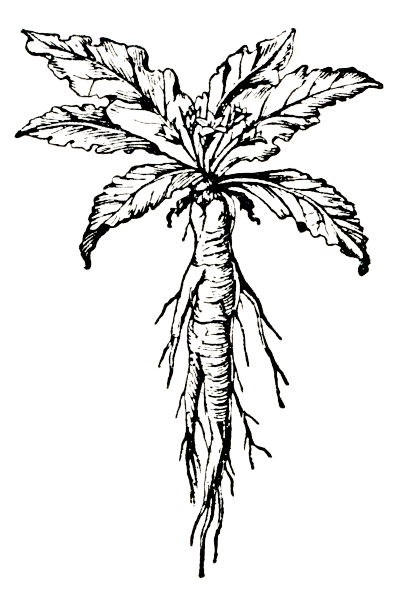
Where It’s Legal
Mandrake has not been officially banned anywhere. However, it’s not a popular hallucinogen. Most people who use this herb do not recommend it. The experience is almost always unpleasant and terrifying — which seems to have been enough to discourage widespread use of the plant. It appears to not even be on the radar for most regulators and will likely remain legal for a long time.
The only exception to this is Louisiana, which banned mandrake along with 40 other psychoactive species of plants back in 2005.
Mandrake Specs
| Effects | Psychedelic |
| Safety Level | Dangerous |
| Natural or Synthetic | Natural |
Different Types of Psychoactive Substances
Psychoactive substances come in many different flavors.
There are stimulants that increase mental and physical energy, and there are sedatives that decrease mental and physical energy.
There are also euphorics, which overlap both the stimulant and euphoric classes.
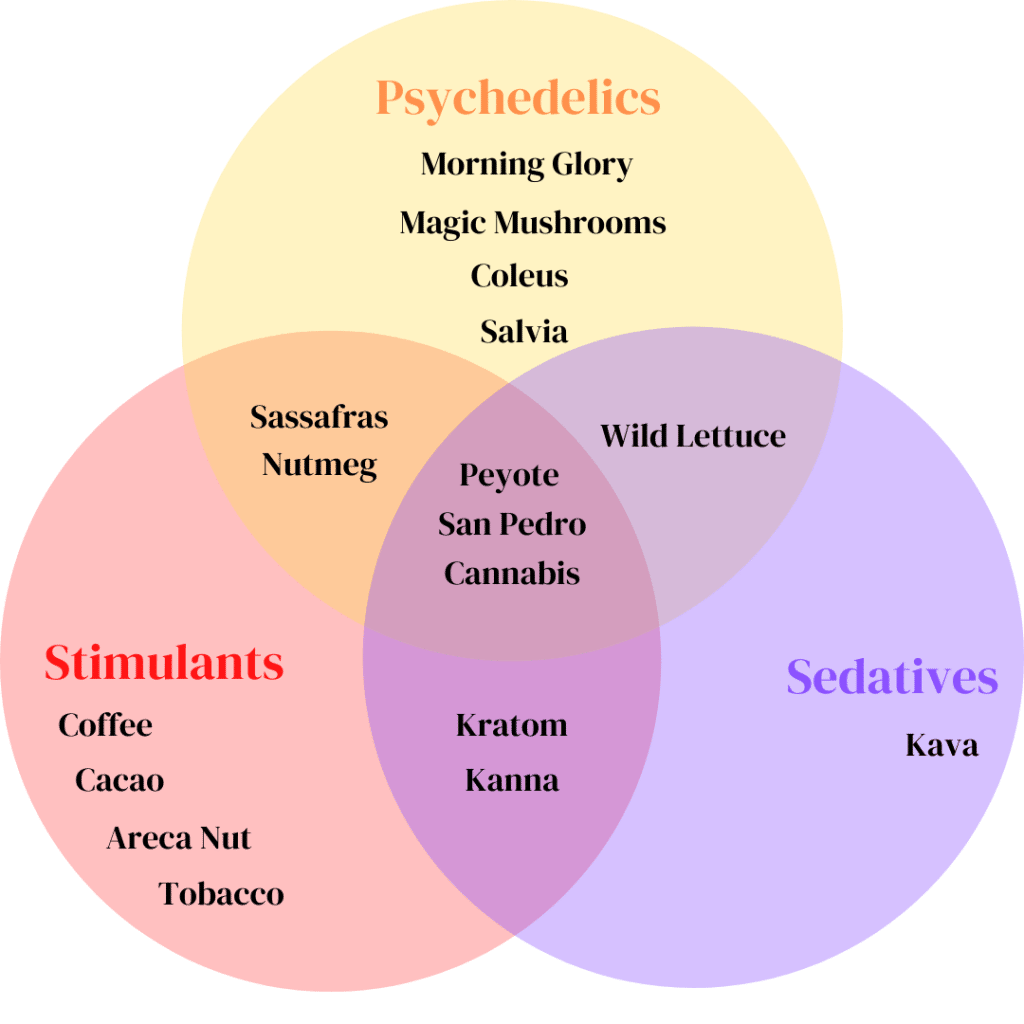
Stimulants
Stimulants are the most commonly used class of psychoactive substances in the world. This includes substances like coffee, cacao, kratom, and tobacco — all of which are used abundantly throughout North and South America, Europe, Asia, and Australasia.
Stimulants are most often used to increase energy levels and focus. Some, like cacao, have a lot more ritualistic use for supporting meditation and self-growth and development.
Most plant-based stimulants are legal, and there are quite a few synthetic stimulants that are legal as well.
Illegal stimulants include MDMA (ecstasy), cocaine, amphetamines, and synthetic cathinones.
Sedatives
Sedatives are the opposite of stimulants. They’re substances that slow neurological activity and promote feelings of rest and relaxation. Sedative substances are often used to relieve stress and anxiety, promote sleep, or mitigate chronic pain.
Some substances are both stimulating and sedative depending on the dose — such as cannabis or kratom.
Not all sedatives are considered psychoactive. Herbs like passionflower and valerian are potent sedatives, but they lack classical psychoactive qualities in that you can’t feel any change in perception.
Illegal sedatives include most opiate-based substances, ketamine, GHB, and DXM.
Euphorics & Entactogens
Another common class of compound is euphorics. These include any substance that produces a feeling of euphoria and connection. Sometimes these substances overlap with the stimulant class, but there are also more sedative euphorics like kava or cannabis as well.
Only a few euphoric substances are considered illegal — the most common being kratom, kava, and Kanna.
Illegal euphorics include MDMA, 2C-B (and other 2C-X substances), & NBOMe’s.
Psychedelics & Entheogens
A psychedelic is any substance that induces a shift in the way we interpret sensory information and promote introspection or ego dissolution.
The most common type of psychedelic is the tryptamine class. This includes DMT, psilocybin, and LSD. Most of these substances are illegal, with the exception of magic mushrooms in certain parts of the world.
There are also a lot of other types of psychedelics, some of which are legal — such as nutmeg, salvia, or morning glory.
Some legal psychedelics are dangerous and should be avoided at all costs. This includes herbs like datura, mandrake, or the amanita mushroom.
→ View all psychedelic substances
The Future of Drug Laws on Planet Earth
Current drug policies aren’t working — drug abuse continues to grow around the world, and substances that have been proven safe and medically relevant remain illegal despite the evidence.
Changing drug policies on a federal level is sluggish, and the final decisions are rarely based on scientific evidence.
As a result, drug laws are being reformed from the ground up — starting at the municipal and state level rather than the federal level.
The best example of this is cannabis reform. Various states have side-stepped federal regulations and allowed for the recreational or medical use of the substance. Federal regulations list cannabis in the highest tier of restricted drug status in the United States.
In Canada, municipalities like Vancouver have taken the first step towards decriminalization of all drugs in a new approach to curb rising abuse and addiction rates.
The US is even further along, with over a dozen states moving towards the decriminalization of all drugs. Countries such as Mexico, Colombia, the Netherlands, Spain, and dozens more have all decriminalized drugs as well.
The way things are trending, it’s more than likely all drugs will be decriminalized within the next decade.

